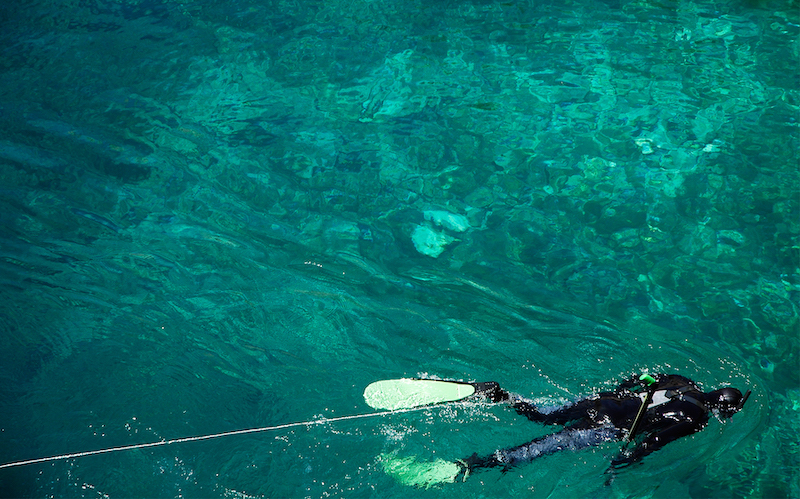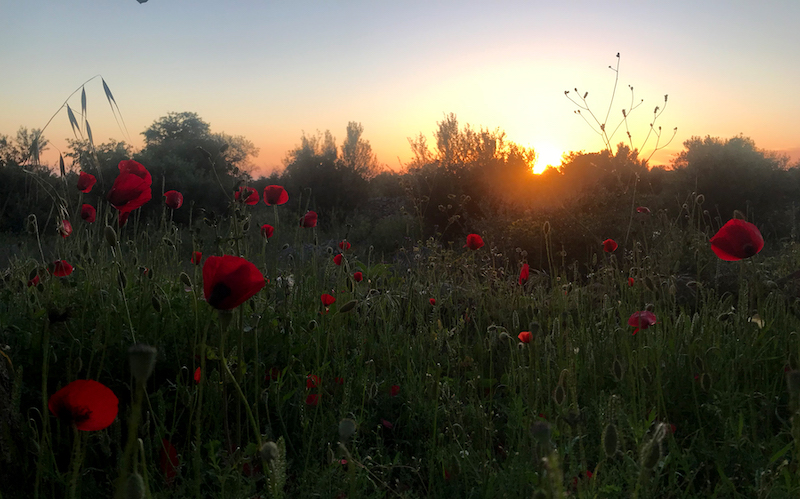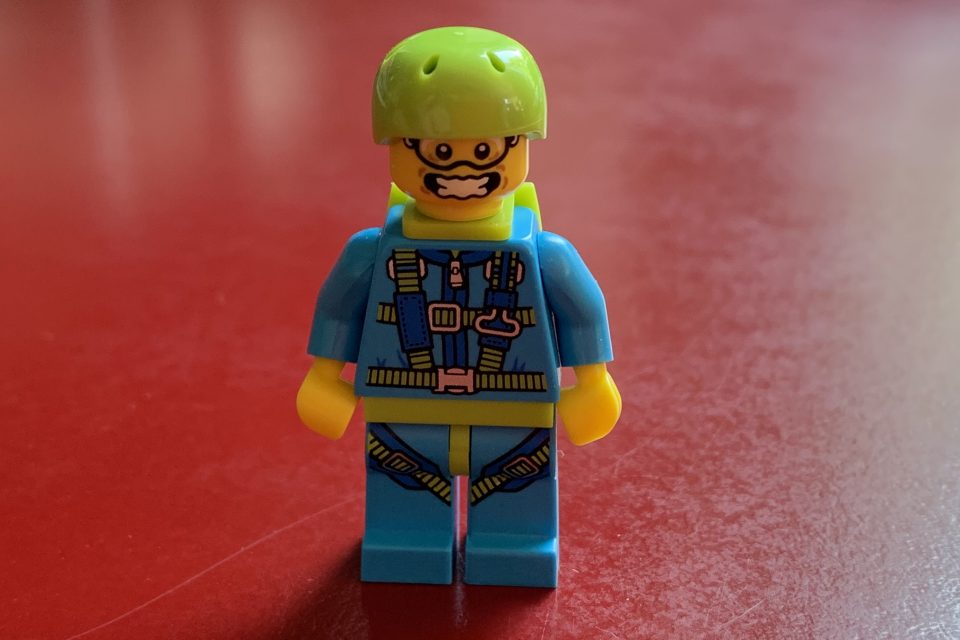This post may have been titled « What I’ve learnt on letting go ».
In 2016 I made my first steps on a deep professional transformation path. Those were only steps then, nothing like a trajectory, as my intention wasn’t clear. Venturing on those new territories and learning new things was rather common in my autodidact life. Starting a graduate program [on collective intelligence and facilitation] lasting more than a year was uncommon, though.

One of the last assignments we’ve had in the program was to perform a self-assessment of our skills based on a list given on the first day of the program.
It was our second self-assessment on this list and the purpose of the exercise was to visualize how we had progressed on each skill, according to our own evaluation.
Only this time were we required to make a short presentation to our fellow students of what we felt was essential in our evolution (between both assessments). That history of change had to be illustrated by examples of situations we had lived together, moments that we had shared during the year.
The main benefit was to revisit the past year, put it back in the perspective our personal & professional transformation path.
Two major subjects popped. Two fields in which I felt my personal transformation had been spectacular : legitimacy and letting go.
Legitimacy as a collaborative design practitioner, but also legitimacy on many parts of my professional life. Letting go in these moments of petrifying doubt, when I would be certain of not being able to live up to (…), to be the best… all what Brené Brown names as the « never enough problem ». In this then-quite-new field of group facilitation, requiring to stand up in front of the room with a proposition of steps to work together, having to adapt the design all the way along, knowing that whatever I have designed will not happen as I imagined… all that would have mostly been a nightmare situation for me in the years before.
In the process of this self-assessment I fully realized what I only had glimpses of, until then.
During the previous 18 months I certainly had taken note, from time to time, that I had dared, managed to, taken pleasure to… different things. Taken note without really realizing the full scale of the transformation.
The time I took to reflect on the past months revealed how I had moved and the extent of that transformation. It was a shock.
Legitimacy and letting go
It wasn’t due to chance if those subjects popped so clearly on the radar. The first one was an essential condition allowing progress in the second.
« Letting go » is praised over and over, in organizations in particular (like benevolence), often like a spell, like one would say « DARE ! stop beeing afraid, for god’s sake ! », meaning « when there’s a will there’s a way ». A good way to empty it from it’s meaning and its power. It’s all but meaningless, though.
« Letting go » took a specific meaning for me on a special day of august 2014 when I traveled to a little airfield in Burgundy. For a reason that remains mysterious to this day, I had been willing to discover skydiving. Mysterious call as I’ve never been an adrenaline king of guy : taking risks was the opposite of my then-self. Regardless, that day and for the first (still the only one) time, I literally put my life into the hands of a perfect stranger to perform a tandem jump out of a plane at 13 500 ft.

That day, I had no letting-go-blah blah in mind. It’s in the weeks and months that followed that I began to put words on the experience and to be amused of the symbolic power of that day. Amused but also quite puzzled, having done all that with absolutely no fear. Amused to realized I had manage to « let go » of many things in that story. Much more amused by the fact it had taken that time for me to realize the extent of the experience.
I went back to the same airfield a few months later to learn to do it all by myself. Reflection on what was going on was then more natural, a kind of meta position. While I’m writing this post I’ve solo jumped 63 more times through the door of one of the perfectly goone planes of our dropzone, each time having this indescribable pleasure when my body exits the plane, feeling the sensations that come along, each time with a varying tension level ranging from almost zero to something more notable, sometimes when boarding the plane, sometimes in the days before coming. This strange hobby has become an amusing observation lab and a first hand practical letting go practice.
It’s only during the 2018 self assessment that I really began to understand, analyze and put words on what this free fall practice and all that I had been through during my university training year brought me.
This learning of what letting go means to me came in through the guts before reaching the mind.
I’ve learnt to feel and recognize physical signs, detect defensive routines ; welcome fear, scare, doubts, not ignoring them but not letting them petrify or drown me.
I’ve started to enjoy free fall jumps, whether through the door of a plane or that of a workshop room : accept and even be amused not to know for sure what’s going to happen, trusting my capacity (and my team’s) to manage what’s about to come. What was previously violent, harsh, frightening, when facing the idea of an important meeting or before a workshop with strangers, became an territory to explore and a game.
What I’ve learnt is that the more you play with your comfort zone the more you enlarge it. Playing at the edge of it, like kicking that edge a little bit with the tip of the foot make things a bit more fun, stress can fade and may even disappear. It allows discoveries, that become a pleasure and a game. Playing makes it more fluid, learning is easier, enlarging the zone a bit more.

I also understood there are conditions to play with and within your comfort zone. That’s where we remember it’s not a spell, a « when there’s will there’s a way ». You have to want it of course, that’s the starting point, but it’s not enough. You can still be clenched with fear. You can throw yourself into the ordeal like you would through the door of the plane and still experience a difficult experience : daring, being petrified.
In my own experience I now begin to understand that there is a single determining condition to those forms of courage, letting go and stepping out of it’s comfort zone : it’s called authenticity.
Being authentic to be brave ?
Being authentic is « being in accord with oneself, with one’s essence. That essence guides us and indicates what’s really good for us. Then, to get back with one’s authenticity would mean to search for our essential position. The one that allows the alignment of our mental, our body and our emotions » (can’t remember the author of this quote, probably Anne Dufourmantelle).
I can be brave and I can let go without being authentic, in a meaningless way, without feeling in the right place. But on the long run or what really matters (subjects having a deep resonance), being authentic in acts and words lies between a pure necessity and huge support.
Authenticity itself has another face : vulnerability, which Brené Brown tells us is « uncertainty, risk and emotional exposure ».
If we go on pulling the thread, I understood that what unlocks vulnerability is benevolence. I like to subtitle « benevolence » when I use it within organizations, from small companies to big groups, where it’s mostly lost its meaning to become a management motto. Benevolence is often seen like a Care Bears thing. That says a lot.
Being benevolent is « being kind with people, tough with problems« . One can be benevolent and say tough things, come up with difficult matters, only with kindness. Kindness and benevolence towards the participants of a workshop, or myself, for example are components of what allows me to be authentic and brave.

Of kindness, Anne Dufourmantelle writes :
« Being kind toward things or beings is to understand them in their shortcomings, their fragility, their immanence, their stupidity. It is not wanting to add to their sufferings, to exclusion, to cruelty, and invent a space for a sensitive humanity, for a relationship allowing weakness ad what might by itself disappoint. That deep understanding involves a truth. »
Being authentic, expose oneself, being kind with oneself to dare with courage (daring bravely would say Brené Brown) is what allows, gives meaning and pleasure to what lies in « letting go » : face uncertainty, exposure and emotional risk and always believing that « I am enough ». What’s at stake is learning to learn from one’s failures and welcoming fears so they make us grow rather than destroy us.
To do so, one needs to drop the armor : the one we put on to protect ourselves from the critics, the attacks, real or feared ; the one we put on to hide. Then can you show up in the arena, expose, risk, loose, succeed, learn, grow.
This wonderful speech from Theodore Roosevelt, quoted by Brené Brow, is all about this showing up in the arena that letting go and being brave involve, but also about the critics, the ones we shouldn’t be listening to :
It is not the critic who counts; not the man who points out how the strong man stumbles, or where the doer of deeds could have done them better. The credit belongs to the man who is actually in the arena, whose face is marred by dust and sweat and blood; who strives valiantly; who errs, who comes short again and again, because there is no effort without error and shortcoming; but who does actually strive to do the deeds; who knows great enthusiasms, the great devotions; who spends himself in a worthy cause; who at the best knows in the end the triumph of high achievement, and who at the worst, if he fails, at least fails while daring greatly, so that his place shall never be with those cold and timid souls who neither know victory nor defeat.
Theodore Roosevelt « Man in the arena », extract from a speech delivered at the Sorbonne, in Paris, France on 23 April, 1910
Best is, you start getting a taste for it, being in the arena, even being shaken, provided you do it daring greatly.
Will you come and play ?

0 comments on “Letting go”Add yours →